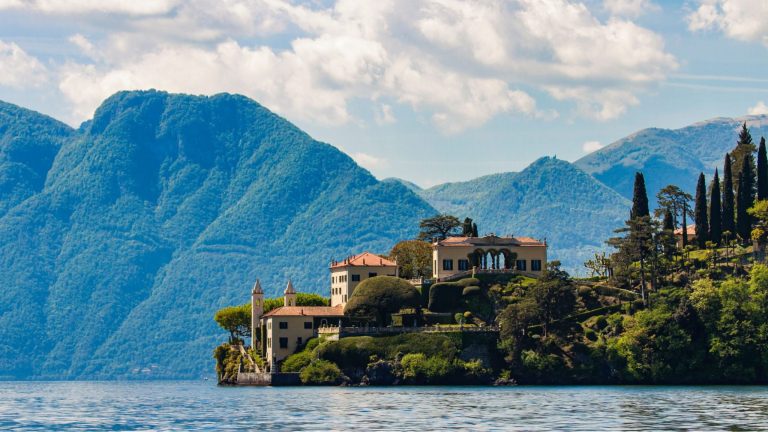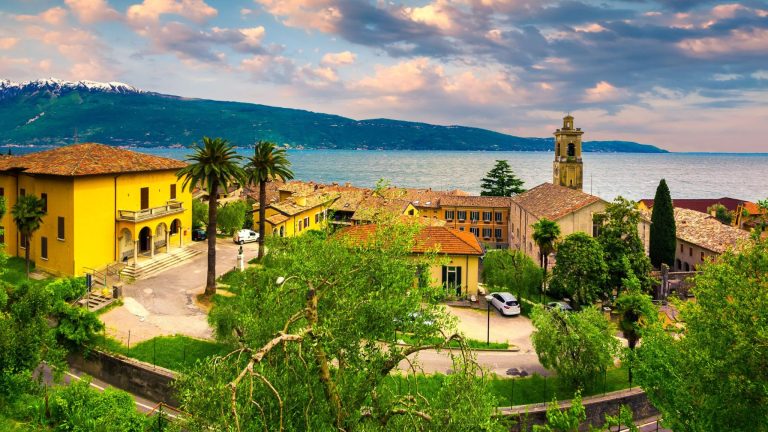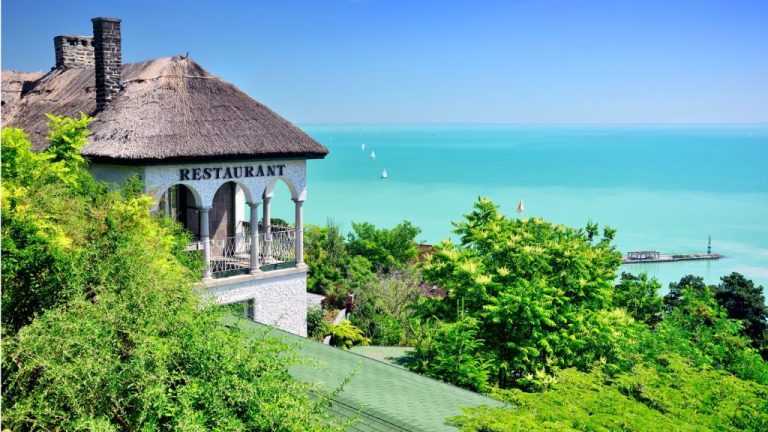From Alpine Lakes to Ancient Ruins
Italy transforms family travel into pure magic. Picture your kids racing down Europe’s most spectacular cliff-edge bike path, suspended 80 meters above Lake Garda’s crystalline waters, or standing slack-jawed as Mount Etna shoots fountains of molten rock into the Mediterranean sky.
This boot-shaped peninsula delivers outdoor adventures that’ll have your children begging to skip screen time, from glacier-topped Dolomite peaks where cable cars whisk you above the clouds, to volcanic islands where ancient Romans once strolled streets now frozen in time.
Whether you’re craving adrenaline-pumping via ferrata climbs, lazy ferry-hopping across mirror-like alpine lakes, or stroller-friendly coastal walks above turquoise seas, Italy serves up family experiences that justify every cent of those international airfares.
And with 2026’s Winter Olympics transforming Cortina and Milan into winter wonderlands, there’s never been a better time to plan your Italian family odyssey.
Quick Tip: Timing Is Everything
Visit April-May or September-October for milder weather, lower prices, and manageable crowds. Summer (June-August) brings searing heat at archaeological sites and packed beaches, but also means all lifts, ferries, and mountain trails operate at full capacity.
How Can You Experience Italy’s Legendary Lakes with Kids?
The Italian Lakes region reads like a fairytale explicitly written for families. Lake Como and Lake Garda offer “Happy Family” ferry deals where two adults purchasing day passes receive up to two children’s tickets (ages 4-12) completely free—an extraordinary value when exploring villages that cling to mountainsides like colorful barnacles.
On Lake Como, that €23.30 adult day pass suddenly covers your entire family for unlimited hop-on, hop-off ferry adventures between Como (town), fairy-tale Bellagio, and gem-box Varenna. Your children will press their noses against cabin windows as villas with manicured gardens slip past, their cypress trees standing like sentinels against impossibly blue water.
Lake Garda ups the ante with its Garda by Bike project—a cycling pathway engineering marvel that’s been dubbed “the most beautiful bike path in the world.” The completed Limone sul Garda stretch suspends riders 50-80 meters above the lake on a cantilevered steel-and-wood structure that required helicopters to construct.
It’s accessible for all ages: 2.6 meters wide, completely flat, and illuminated with LED lighting embedded in the railings so you can safely ride after sunset. Small children who’d struggle with mountain trails will confidently pedal this smooth surface while adults gasp at panoramic vistas. The €2-2.5 kilometer section takes roughly 30 minutes to cycle one-way, and the 10 km/h speed limit keeps everyone relaxed. By late 2026, construction crews expect to complete the connection to Riva del Garda, adding another spectacular 5-kilometer section to this UNESCO World Heritage Site.
Ferry logistics make exploring effortless. Lake Garda’s day passes work on a tiered system: €34.30 for whole-lake access (covering Desenzano to Riva del Garda with all fast services included), or €20.50 for just the upper lake if you’re based around Riva or Limone. The vehicle ferries between Toscolano Maderno and Torri del Benaco operate year-round—critical knowledge if your teenagers are getting restless and you need to switch shores quickly. Book morning departures to secure window seats; by midday in summer, ferries pack with day-trippers fighting for deck space.
Why It Matters: Transportation as Attraction
Italian lake ferries aren’t just getting from point A to B—they’re floating observation decks where your family watches village life unfold at a civilized pace, mountains reflecting in water so still it looks Photoshopped. Children naturally engage with the experience: counting towns, spotting sailboats, arguing over which villa they’d choose.
What Makes the Cinque Terre Perfect for Active Families?
Cinque Terre’s five pastel villages stacked like wedding cakes above the Ligurian Sea might look impossibly vertical for families. Still, the Cinque Terre Treno MS Card unlocks this coastal paradise with surprising ease. This all-in-one pass delivers unlimited regional train rides between Levanto and La Spezia (hopping between Riomaggiore, Manarola, Corniglia, Vernazza, and Monterosso), plus access to the famous Sentiero Azzurro hiking trails and free village buses. Dynamic pricing means savvy families can score dramatic savings: a family of four (two adults, two kids aged 4-11) pays just €49 during Band A “green” weekdays in spring, versus €84 on peak summer weekends. That’s the difference between gelato money and a nice dinner.
The show-stopping Via dell’Amore (Path of Love) finally reopened February 14, 2025, after 12 years of restoration following a devastating landslide. This 900-meter paved path between Riomaggiore and Manarola now requires advance reservation (€10 surcharge beyond your Cinque Terre Card) and operates with strict 30-minute time slots, capping capacity at 200 people per window. Book 2-3 days in advance on the official viadellamore.info website. What makes Via dell’Amore exceptional for families is its distinction as the only wheelchair-accessible trail in the entire Cinque Terre National Park—smooth, flat, with an elevator at the Riomaggiore entrance. Parents with strollers, grandparents with mobility issues, and exhausted toddlers can all access jaw-dropping coastal views without having to climb stairs.
Smart families combine trail time with beach afternoons. After morning hikes, grab the train to Monterosso (the only village with real sandy beaches), where kids can decompress with bucket-and-spade therapy while you sip Ligurian white wine. The village-hopping train system runs every 15-30 minutes during peak season, transforming what could be stressful logistics into a seamless flow.
Where Do the Dolomites Deliver Mountain Magic for All Ages?
The Dolomites practically invented family-friendly alpine adventure. Cortina d’Ampezzo’s Tofana cable cars (Freccia nel Cielo) demonstrate how Italian engineering puts high-altitude scenery within reach of every family member. For €33 (adults) or €16 (juniors 7-14), you’ll ride from Cortina town to Ra Valles station at 2,475 meters, accessing UNESCO World Heritage panoramas without breaking a sweat. Children under 6 ride free, and the cable car welcomes wheelchairs, strollers, and even leashed dogs.
The summit experience feels transformative—you step out into crystalline air where the Dolomite peaks tooth the horizon like prehistoric shark jaws, their limestone faces blushing pink during the famous “enrosadira” sunset phenomenon. A self-service refuge at Ra Valles serves mountain cuisine (think hearty polenta and local cheeses) while kids press their noses against windows watching clouds drift through valleys below. The brave can continue to Cima Tofana at 3,244 meters, though this requires a short assisted walk with steel cables, which is not recommended for those with vertigo.
The Dolomiti Supersummer pass opens 140 lifts across 15 valleys from May through November, creating a playground where families can hike up, ride down, and explore 13,000 kilometers of trails without driving between regions. At €65 per adult day pass (€46 for juniors, free for children under 8), it’s exceptional value compared to individual lift tickets. The Points Value Card works brilliantly for families who want flexibility—buy a rechargeable card and deduct units as you ride different lifts, perfect when some family members want more lift-accessed hiking than others.
Family via ferrata programs introduce older children (generally 7-8+ years old, minimum weight 40kg) to Italy’s famous cable-protected climbing routes. The beginner-friendly Via Ferrata Cascate di Fanes runs alongside waterfalls through evocative woods, while Grotte di Volpera features ladders, slack lines, and monkey bridges that kids can repeat endlessly. Equipment rental costs around €20/day at major lift stations, with Lagazuoi offering a generous “2 adults = 2 free kids’ kits” family promotion. Professional guides charge €330-440 for private family groups, providing equipment, route selection, and—critically—ensuring proper safety procedures that prevent the clipping errors common with children under 18.
Winter skiing delivers even more value through the Superski Family pass system. Families of 3-8 members (everyone over age 8) buy flexible bundles of 10-20 ski days per person at a maximum €39 per day—roughly half the regular €77-86 day-pass rates. These days don’t need to be consecutive; use them throughout the November-April season as schedules allow. Children under 8 ski completely free when a parent purchases their pass, making the Dolomites genuinely affordable for large families. The 2025-2026 season runs November 29-April 6, though Cortina’s Tofana lifts will close January 27-March 16 during the Milano-Cortina Winter Olympics—bringing spectacular competition but also massive crowds and inflated prices in the Olympic windows.
How Can You Combine History, Volcanoes, and Beaches in Southern Italy?
Mount Etna embodies the elemental drama that makes Italy unforgettable for children. Europe’s most active volcano regularly puts on pyrotechnic displays, and the cable car + 4×4 combo tour (€78 adults, €50 kids 5-10) delivers an accessible volcano experience that feels genuinely adventurous. The 15-minute cable car ride from 1,920m to 2,500m altitude offers increasingly dramatic views of Sicily’s coastline and the smoking summit cones. Specialized Unimog 4×4 vehicles then climb to approximately 2,900m where certified alpine-volcano guides lead 60-minute walks to the Barbagallo craters.
This isn’t Disney—it’s real volcanic terrain where guides explain recent eruptions, kids spot sulfur crystals in cooling lava, and everyone feels the temperature drop 20°C from base to summit. Pack serious winter gear (warm jackets, boots, hats, scarves) even in summer; Etna’s high-altitude winds bite. The tour is realistically suited for ages 5+, though nothing prevents younger children beyond the cold and altitude challenges. Wheelchairs can access the cable car and 4×4 vehicles. For families with toddlers, the free Silvestri Craters at 1,900m provide a more leisurely 60-90 minute walk with volcanic features minus the altitude stress.
Pompeii emerged from slumber with new 2025 regulations designed to manage overwhelming crowds: a 20,000-visitor daily cap and mandatory timed-entry slots during April-October. Morning slots (9 am-1 pm) accommodate 15,000 visitors; afternoon slots (1 pm-5:30 pm) just 5,000. These tickets are now non-transferable—you must present ID matching the name on your ticket. Book through the official pompeiisites.org platform weeks ahead; same-day tickets aren’t guaranteed during peak summer. At €18 for basic entry (€22 for Pompeii+ including suburban villas), the ancient city delivers extraordinary value considering you’re walking streets where toga-clad Romans shopped 2,000 years ago.
Smart families arrive at the 9 am opening to beat the searing midday heat and tour-bus hordes. The site lacks shade—bring hats, sunscreen, and extra water for the 3-4 hour visit most families need. Children may find the plaster casts of volcano victims particularly engaging (be sure you know how to explain what happened to them in an age-appropriate manner). Combine your morning at Pompeii with an afternoon at Amalfi Coast beach towns like Positano or Amalfi, roughly an hour’s scenic drive away. Day tours from Rome typically include both Pompeii and coastal stops, though these make for long 12-14-hour days better suited for ages 8+.
What About Theme Parks and Rome’s Outdoor Adventures?
Gardaland, Italy’s premier theme park near Lake Garda, operates dynamic pricing where tickets range €39-56 for adults depending on demand (children 90cm-10 years pay €39-50; under 90cm free). Online booking saves €5-10 per ticket versus gate prices. The 140cm height threshold unlocks most major thrill rides (Raptor, Blue Tornado, Oblivion), while families with younger children concentrate on Fantasy Kingdom and the popular Peppa Pig Land. The park celebrates its 50th anniversary in 2025 with the new Animal Treasure Island water dark ride. Summer hours stretch until 11 pm during peak season (April-November), with special Magic Halloween and Magic Winter seasons extending operations through early January 2026.
Rome’s outdoor gem hides in plain sight: the Via Appia Antica (Appian Way) offers families car-free cycling along ancient Roman paving stones lined with tombs, aqueducts, and rolling countryside. E-bike rentals from EcoBike (the official park partner) cost €8/hour or €32/day, with child seats available for an extra €1. Mountain bikes or e-mountain bikes are strongly recommended over city bikes—those 2,000-year-old basalt cobblestones rattle teeth and wheels. Children 4+ can ride their own small bikes, while 2-3-year-olds fit in rear child seats (maximum 20kg).
The family-friendly Caffarella Valley section provides completely car-free, smooth dirt trails perfect for younger children and nervous cyclists. Kids love spotting the resident llamas, horses, sheep, and rabbits from nearby farms. Pack picnics for the shaded Sant’Egidio natural spring area, where Roman fountains still provide free drinking water. The archaeological section of Via Appia Antica runs roughly 8km (5 miles), coveringthe main highlights in 1-2 hours of riding. Sundays see the road closed to vehicle traffic, creating ideal cycling conditions—though note the catacombs close Sundays, so weekday visits allow combining cycling with underground tomb tours (€10 adults, €7 ages 7-16, free under 6).
Planning Around the 2026 Winter Olympics
The Milano-Cortina 2026 Winter Olympics (February 6-22, 2026) and Paralympics (March 6-15) will transform northern Italy into winter sports central—and dramatically impact family travel logistics. With venues spanning from Milan’s ice arenas to Cortina’s Alpine skiing slopes 300 miles away, accommodation in both cities faces severe pressure. Book immediately if planning February-March 2026 travel; hotel prices are already climbing and availability shrinking.
Strategic families should consider staying in satellite towns like Bergamo (40km from Milan with excellent train connections) or looking at apartment rentals over hotels for better value. Children under 4 don’t need event tickets; ages 4+ pay €30-1,400 depending on the event (most tickets under €100). The family-friendly mascots Tina and Milo (adorable Gen Z stoats) will appear at venues with meet-and-greets, while free victory celebrations in Milan’s Piazza del Duomo create accessible Olympic atmosphere. Figure skating, ice hockey, and freestyle skiing offer the most visual excitement for children. Critically, kids under 15 travel free on all Trenitalia high-speed trains when accompanying paying adults—a huge savings when shuttling between Milan and mountain venues.
The Olympics close Cortina’s Tofana cable cars January 27-March 16, 2026, so winter families should either visit December-January or wait until late March for regular operations.
Make It Happen
Italy rewards families who embrace its outdoor adventures with experiences that live in memory long after vacation tans fade. The combination of ancient culture, dramatic geography, and genuine Italian warmth toward children creates a perfect storm of family travel magic. Book those “Happy Family” ferry passes, reserve your Via dell’Amore time slot, pack the hiking boots and swimsuits, and prepare for your children to experience Italy not as a museum to shuffle through, but as a vast adventure playground where every valley, volcano, and village offers another story to tell.
Start planning now—especially for 2026 Olympic periods—and remember that shoulder seasons deliver the sweet spot of good weather without summer’s crowds and costs. Your family’s Italian adventure awaits, from Dolomite peaks to Mediterranean shores.







